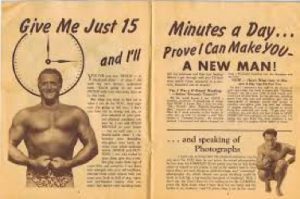The Coaching Conundrum – if it works, why don’t more managers do it?

I had a bit of an ‘aha’ moment last week while researching for a presentation on coaching I gave at the Chartered Management Institute.
It was fuelled by an enlightening survey carried out this year by BlessingWhite on how many leaders and managers are coaching their people.
Encouragingly around 80% of managers enjoy coaching and a similar number of employees want to be coached. And yet, the actual amount of coaching taking place remains comparatively low…Why?
Well, no prizes for guessing the top reason given. Yes, it’s our old friend, time, or lack of it. 29% stated they didn’t have time to coach. And, somewhat ironically, the 2nd biggest reason, at 17%, was that managers didn’t feel they had all the answers. Hello?
Now, the facts are that, if you’re pushed for time, coaching can be done in 10 minutes, or less. And do you know how many answers you need to have? The answer (!) is none, zero, zilch, zip, not a sausage.
So what’s the real challenge (this is the ‘aha’ bit)? Well, let me tell you a little story to illustrate.
When I was 15, I, like many young people, had a real hang-up about my body. In those days I was built like a fence post. There was more fat on a chip. I was the original 7-stone weakling. I never went near a beach as I was scared of getting picked up by a gull, (OK, you get the picture).
So, I decided to do something about it. I ordered a Bullworker, which was a glorified chest-expander, from my friend’s mother’s Kays catalogue (this was the 1970s, long before Amazon had even been thought of). I was a little worried that when it arrived, I wouldn’t have the strength to get it out of the box, but I just about managed, over a couple of days.
The Bullworker’s big selling point was that, if you followed the exercises for just 10 minutes a day, you could seriously improve your strength and muscle tone. That seemed to fit the bill perfectly, I thought. I could use the thing before school and go off every morning with a new swagger, knowing no one would ever kick sand in my face again, to quote the old Charles Atlas ad.
Now here’s the thing. Being from Yorkshire, if I’ve paid hard-earned paper round money, even over 20 weeks on easy-pay terms, I want to get maximum value. So I stuck tenaciously to the Bullworker exercises, day after day, week in, week out, month by month, through most of my teenage years.
The result? Well, although I never turned out looking like Arnold Schwarzenegger, my strength and muscle tone did vastly improve, as did my confidence. Even more importantly, my ‘10 minutes a day’ back in 1978 created in me a love of keeping fit and healthy which has stuck with me right to the present day.
And my point is?
The point is that for coaching to really work, for managers and employees to develop mental strength, confidence and emotional well-being, coaching has to become a HABIT! For people to learn to love personal growth and development it has to be carried out regularly, even if that’s for short sessions.
Of course, for most managers, that’s easier said than done. Unlike professional coaches, managers have to balance coaching along with every other component of their role. They need to juggle development with other management tasks as well as completing their own work.
Then, too, a manager is generally far more knowledgeable about the specific business than an external coach. Therefore, the temptation to give advice, taking the short cut to action, can be hard to ignore.
But, in this fast-evolving business world, where many forward thinking organisations are finally getting it in realising that traditional management approaches, top-down structures and ‘command and control’ hierarchies may actually be hindering productivity, never has there been more of a need to coach people regularly.
So, how do you develop a coaching habit? As I now need to go off to the gym, this will be discussed in my next post!


